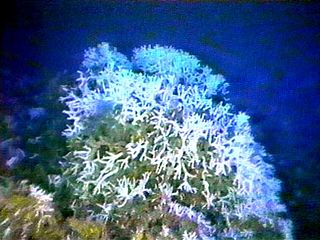
Oculina is a genus of colonial stony coral in the family Oculinidae. These corals are mostly found in the Caribbean Sea, the Gulf of Mexico and Bermuda but some species occur in the eastern Pacific Ocean. They occur at depths down to 1000 metres.
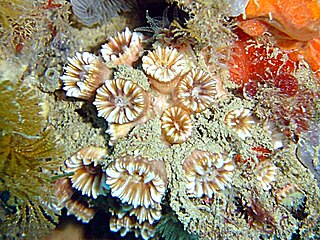
The Caryophylliidae are a family of stony corals found from the tropics to temperate seas, and from shallow to very deep water.

Cycloseris is a genus of solitary disc corals in the family Fungiidae. They are found in the Indo-Pacific. They inhabit the lower reef slopes, and the areas between reefs with soft sediments. They tolerate turbid waters.

Oculinidae is a family of colonial corals.

Ebalia is a genus of crab in the family Leucosiidae.

Dendrophylliidae is a family of stony corals. Most members are azooxanthellate and thus have to capture food with their tentacles instead of relying on photosynthesis to produce their food. The World Register of Marine Species includes these genera in the family:

Balanophyllia is a genus of solitary corals in the order of stony corals.
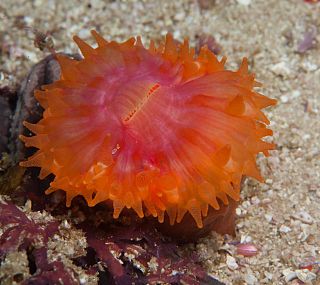
Caryophyllia is a genus of solitary corals in the family Caryophylliidae. Members of this genus are azooxanthellate and are found in the North Atlantic Ocean and the Mediterranean Sea at depths down to 2,670 metres (8,760 ft).

Stylaster is a genus of hydroids in the family Stylasteridae.

Dendrophyllia is a genus of stony cup corals in the family Dendrophylliidae. Members of this genus are found at depths down to about 900 metres (3,000 ft). They are azooxanthellate corals, meaning that they do not contain symbiotic photosynthetic dinoflagellates as do many species of coral.

Conotrochus is a genus of small corals in the family Caryophylliidae. It holds four species.

Turbinoliidae is a family of reef building stony corals.

Flabellidae is a family of marine corals. It consists of the following genera:
Flabellum angulare is a species of deep sea coral belonging to the family Flabellidae. It is found in the northern Atlantic Ocean at depths of between 2,000 and 3,186 m.

Flabellum curvatum is a species of marine, cold water coral in the family Flabellidae. It is an azooxanthellate coral, that is to say without symbiotic zooxanthellae. The species is native to deep waters around Antarctica.
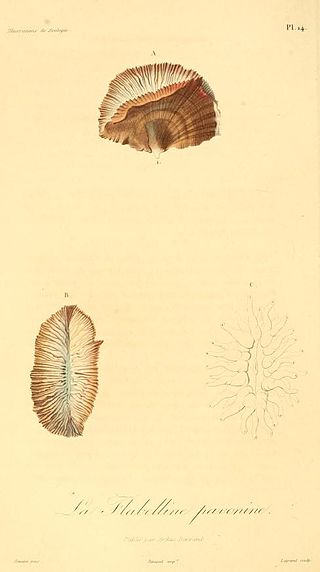
Flabellum pavoninum is a species of deep sea coral belonging to the family Flabellidae. It is found in the western Indo-Pacific Ocean at depths varying from 73 to 665 m. They are sometimes known as dentures of the sea because of the perceived resemblance of the corallum (skeleton) to a set of dentures.
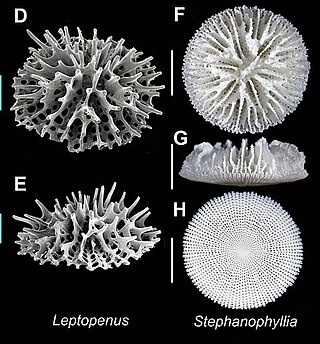
Micrabaciidae is a family of marine stony corals of the order Scleractinia.

Heterocyathus is a genus of coral of the family Caryophylliidae.

Madracis is a genus of cnidarians belonging to the family Pocilloporidae. The genus has a cosmopolitan distribution.

Trochocyathus is a genus of corals in the family Caryophylliidae. Living species are found in waters near Hawai'i at depths of 64 to 1,020 meters. Fossil species are found as far back as the latest Paleocene in the Dilwyn Formation of Australia, in the late Cretaceous in the Woodbury Formation of New Jersey, and in Suffolk.


















